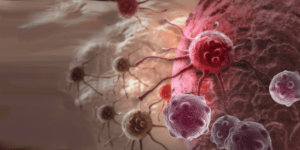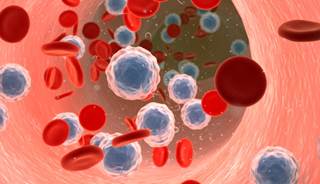“…whether and early, late autologous transplant is nowadays still needed to treat Multiple Myeloma patients or if it should be replaced by new drug containing regimens with or without chemotherapy”
When diagnosed with multiple myeloma, an incurable blood cancer, the most pressing issue that the patient will face is whether to undergo and early late autologous stem cell transplantation. Or to have a stem cell transplant at all?
Close behind this question will be whether to have the ASCT immediately following induction therapy or to wait before undergoing an ASCT.
A distant question will be if the newly diagnosed MMer should have an ASCT ever.

Unfortunately, the study below does not answer the early/late question fully. Clinical trials have danced around the issues playing fast and loose with some of the key factors needed for MMers to decide. The bottom line for newly diagnosed MMers is that research will not answer the ASCT now or later question. The patient and his/her support team must decide based on their understanding, priorities, and goals.
What the study below does address is several important issues that newly diagnosed MMers should understand. And those issues are:
- New drugs aka novel therapies have significantly increased the rate of high-quality responses and improved outcomes,
- the manageable toxicity of these new drugs aka novel therapies make them suitable for long-term and continuous treatment
- harvest and store your stem cells no matter how you feel about ASCT now-
Conventional oncology agrees that ASCT is high-dose, aggressive therapy. Make no mistake, ASCT can mean serious short, long-term and late-stage collateral damage. The question is when to undergo this aggressive, high-dose therapy and if you will live a better, longer life with or without it.
To learn more about first line therapy for multiple myeloma click now
To learn more about autologous stem cell transplantation for myeloma click now
I am both a long-term MM survivor and MM cancer coach. Please scroll down the page, post a question or comment and I will reply to you ASAP.
Thank you,
David Emerson
- MM Survivor
- MM Cancer Coach
- Director PeopleBeatingCancer
Recommended Reading:
“Introduction
The IFM 2009 study prospectively evaluated the combination of 8 cycles of lenalidomide, bortezomib and dexamethasone (RVd) versus (vs) 3 cycles of RVd plus high dose (HD) melphalan with autologous stem cell transplantation (ASCT) plus 2 consolidation RVd cycles, followed by lenalidomide maintenance for 12 months (mo) in newly diagnosed multiple myeloma (NDMM) patients (Attal M et al, NEJM 2017).
RVd with transplant was associated with significantly longer progression-free survival (PFS) (primary endpoint) compared to RVd alone.
Overall survival (OS) at 4 years was similar in both groups.
In order to evaluate the long-term outcome in the 2 arms and the impact of 2nd line treatments on PFS2 and OS, we performed an extension of patient follow-up (FU) of the IFM 2009 study over a period of 4 years (DB-FU-IFM 2009 / NCT03679351)…
Results
As of March 2020, median FU was 93 mo [range, 88-98]. As previously reported, median PFS was significantly longer in the transplant group (TG), at 47.3 mo compared to 35.0 mo in the RVd alone group (RG) (HR (95CI) 0.70 [0.59-0.83] p<0.001). 497/700 pts experienced disease progression, 270 (77.1%) pts in the RG and 227 (64.9%) pts in the TG; 262 and 217 of them respectively initiated a 2nd line.
Among these pts, 76.7% (201/262) in RG and 22.6% (49/217) in TG received an ASCT at 1strelapse; 40.1% (105/262) and 46.5% (101/217) respectively received a pomalidomide-based 2nd line. Only 14 and 12 pts received carfilzomib- and daratumumab-based 2nd line regimens.
Median PFS2 was similar in both groups, at 95 mo in the RG and not reached (NR) in the TG (HR [95CI] 0.96 [0.76-1.21] p=0.76). This estimate was homogeneous across ISS stage (p-value for interaction 0.26) and cytogenetic group (p-value for interaction 0.90). Median PFS2 in ISS3 and high-risk cytogenetic pts was 73 and 75 mo, and 48 and 47 mo, in the RG and TG, respectively. Second PFS was significantly increased in the RG, at 36 vs 25 mo in TG (HR [95CI] 1.41 [1.11-1.79] p=0.003). Median OS was NR in either group. At 8 years, the OS rate was 60.2% in the RG and 62.2% in the TG (HR [95CI] 1.03 [0.80-1.32] p=0.81). Minimal residual disease (MRD) was a strong predictor of outcome: PFS (HR [95CI] 0.28 [0.22-0.36] p<0.001), PFS2 (HR [95CI] 0.27 [0.20-0.37] p<0.001) and OS (HR [95CI] 0.35 [0.25-0.49] p<0.001) were longer in pts achieving MRD negativity, in comparison with those who did not.
The incidence of invasive 2ndprimary cancer was not significantly different between the 2 groups (p=0.38); of note, 2nd hematological malignancies were reported in 5/350 and 7/350 pts in RG and TG respectively.
Conclusion
RVd before and after HD melphalan and ASCT followed by one-year of lenalidomide maintenance is associated with a significantly longer PFS than RVd alone, without a significant increase of 2nd primary malignancy.
At 1st relapse, before the systematic use of daratumumab- or carfilzomib-based combinations, almost half of the pts received pomalidomide-based treatment and about 3 quarters of pts who had not received frontline ASCT underwent delayed transplant.
With a FU of almost 8 years, median OS was NR and there was no difference between the 2 strategies with respect to PFS2 and OS.
MRD appears to predict outcome and might be used after induction to identify those pts who probably do not require a transplant. Quadruplets with anti-CD38 monoclonal antibodies combined with the selective use of HD therapy and transplant, followed by extended maintenance, should be considered in the future to further improve outcome. Such an approach could potentially provide a functional cure for a significant proportion of NDMM pts…”




